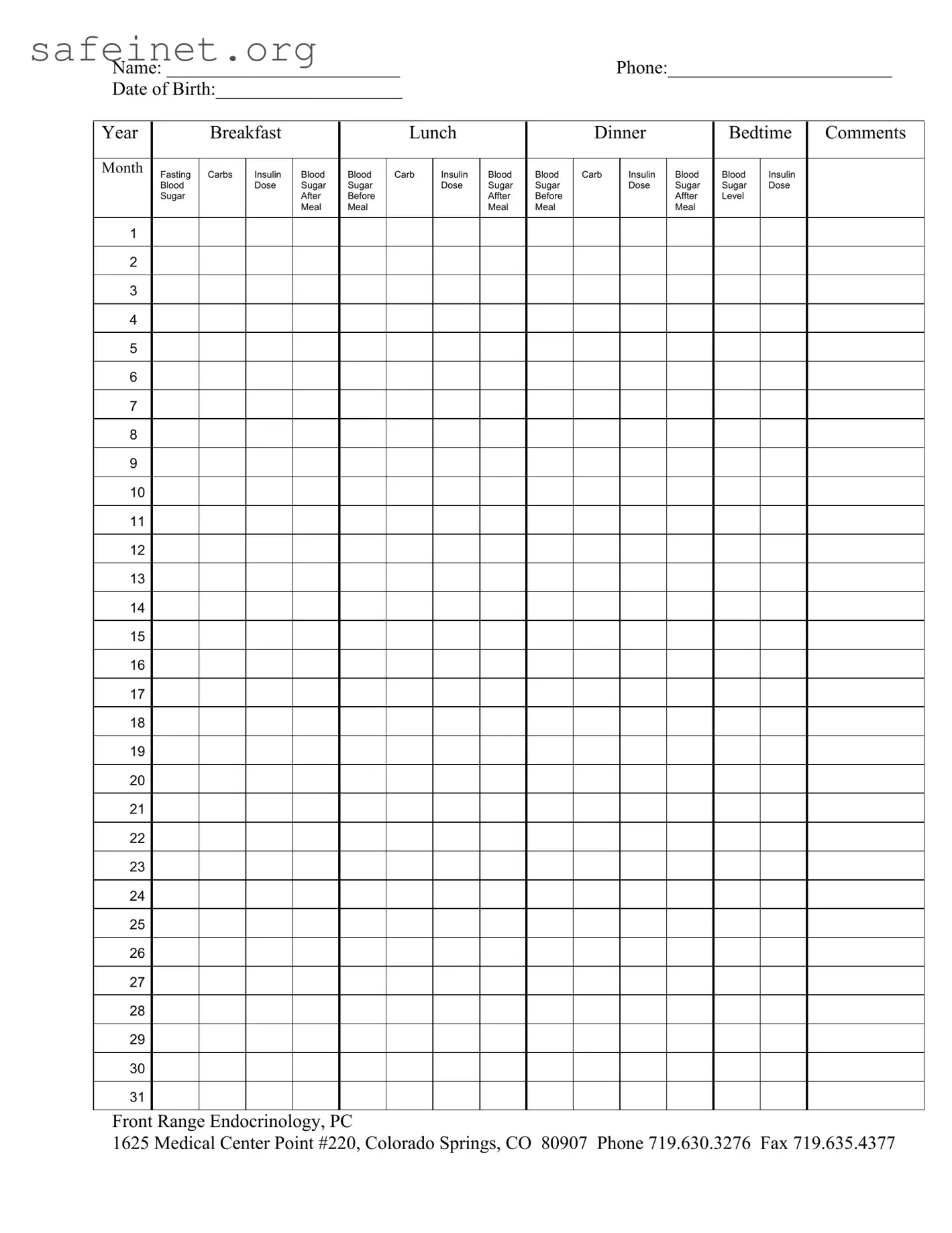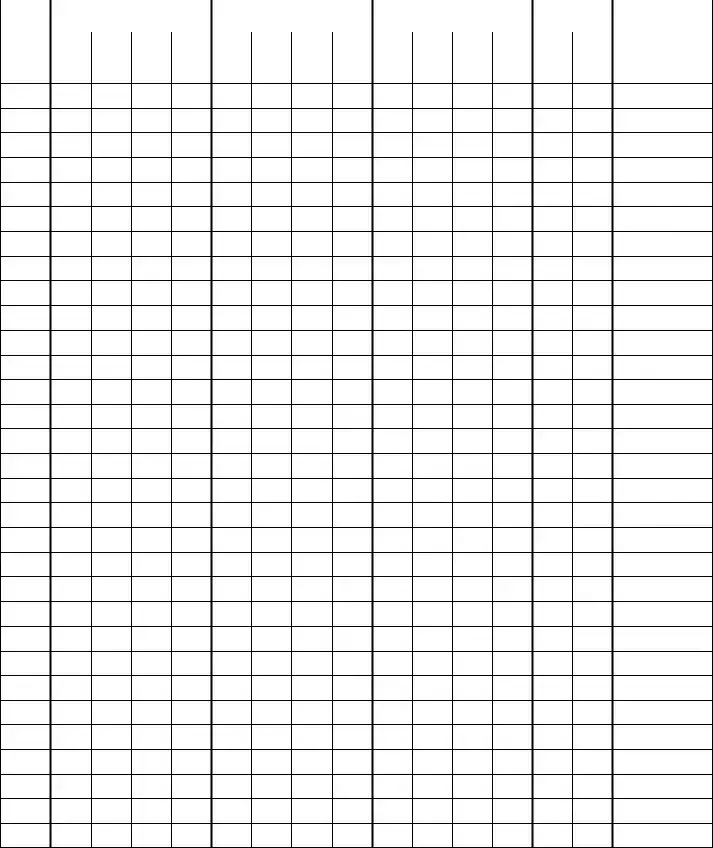The Food Diary is similar to the Diabetes Meal Log form in that both documents help individuals track their food intake. A food diary captures what you eat over a period, allowing you to reflect on your dietary habits. This is important for those managing conditions like diabetes, where knowing carbohydrate intake is crucial for blood sugar control. In both logs, someone lists meals and possibly notes the time of consumption, making it easier to identify trends or patterns in eating behavior.
The Blood Sugar Log serves a similar purpose as the Diabetes Meal Log by helping patients monitor their blood sugar levels regularly. It records readings taken at various times during the day, such as before and after meals. This ongoing tracking can provide valuable insight into how different foods affect blood sugar. It emphasizes the relationship between carbohydrate consumption and glucose levels, much like the meal log does.
The Meal Plan template also aligns closely with the Diabetes Meal Log. It outlines planned meals for a week or month, taking into account carbohydrate counts and nutritional balance. While the meal log is primarily reactive, the meal plan is proactive. Both support individuals in making informed food choices, ensuring they stick to their dietary needs and preferences.
The Calorie Counter is another document that correlates with the Diabetes Meal Log. This tool focuses on tracking calorie intake to manage weight and health, which is crucial for diabetes management. Like the meal log, it involves documenting what you eat, but it emphasizes total caloric value rather than just carbohydrate content. This broader perspective can help manage overall health alongside blood sugar levels.
The Nutritional Assessment form shares similarities with the Diabetes Meal Log by evaluating one’s dietary habits. This document often includes background information on food choices, nutritional needs, and health goals. It can provide context for meal logs, guiding individuals on adjusting their meal choices to better align with their health objectives.
The Glycemic Index Tracker focuses on documenting foods based on their glycemic index, much like the Diabetes Meal Log emphasizes carbohydrate intake. It helps individuals understand how different foods affect blood sugar levels, promoting healthier choices. Like the meal log, it encourages awareness of how specific diets impact diabetes management.
The Exercise Log also bears resemblance to the Diabetes Meal Log. Both documents are used to track activities related to managing diabetes. While the meal log tracks food intake, the exercise log records physical activity, which directly influences blood sugar levels and overall health. Together, they offer a comprehensive view of how lifestyle choices affect diabetes management.
The Insulin Administration Log is closely related as it records insulin doses given throughout the day. Like the Diabetes Meal Log, which notes meal timings and carbohydrate intake, this log allows users to see how their food intake and insulin use interact. This awareness aids in making informed decisions about food and insulin management.
The Dietary Restrictions form can work hand-in-hand with the Diabetes Meal Log. This document outlines any food allergies, intolerances, or specialized diets that must be considered when planning meals. Understanding these restrictions is vital for effective meal logging, as it helps ensure that dietary needs are met while managing diabetes.
Finally, the Health Journal is similar in that it serves as a comprehensive record of an individual's health journey, including meals, exercises, medications, and overall well-being. It provides a holistic view of health management, incorporating elements from the Diabetes Meal Log, thereby giving insights into lifestyle changes and their effects over time.

